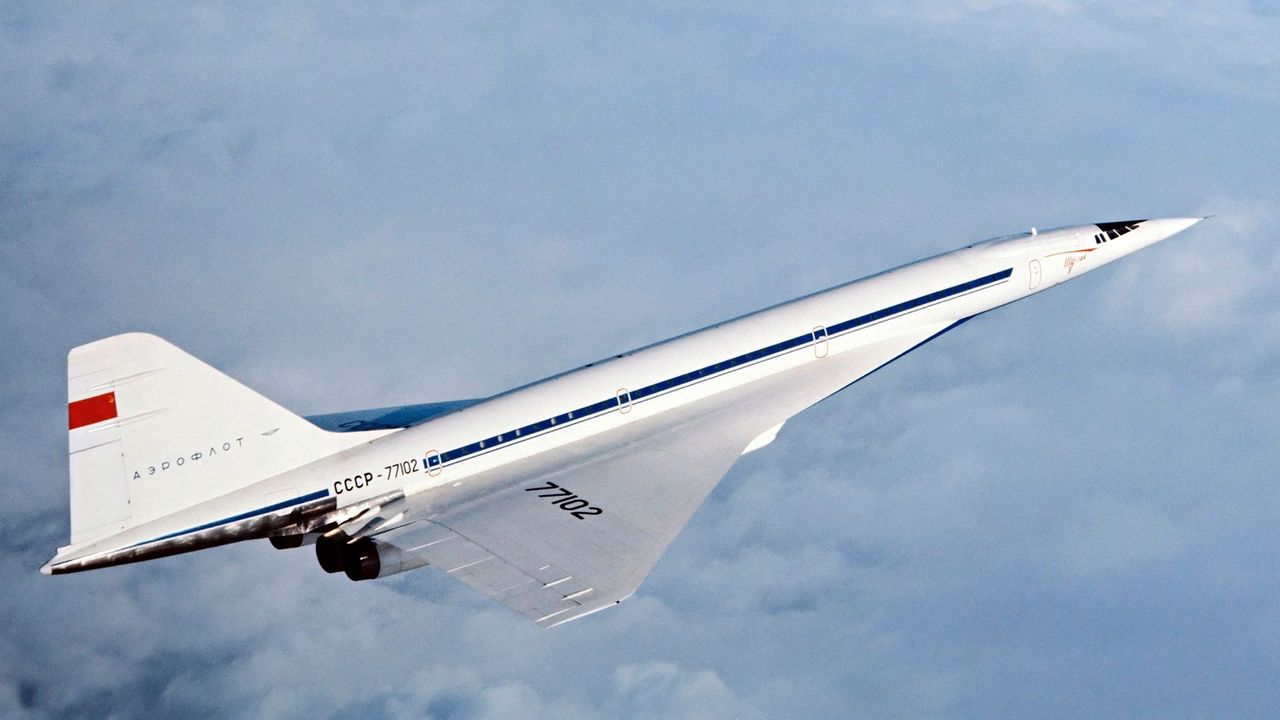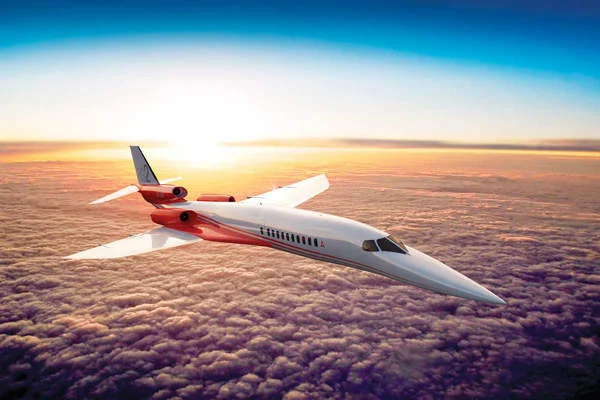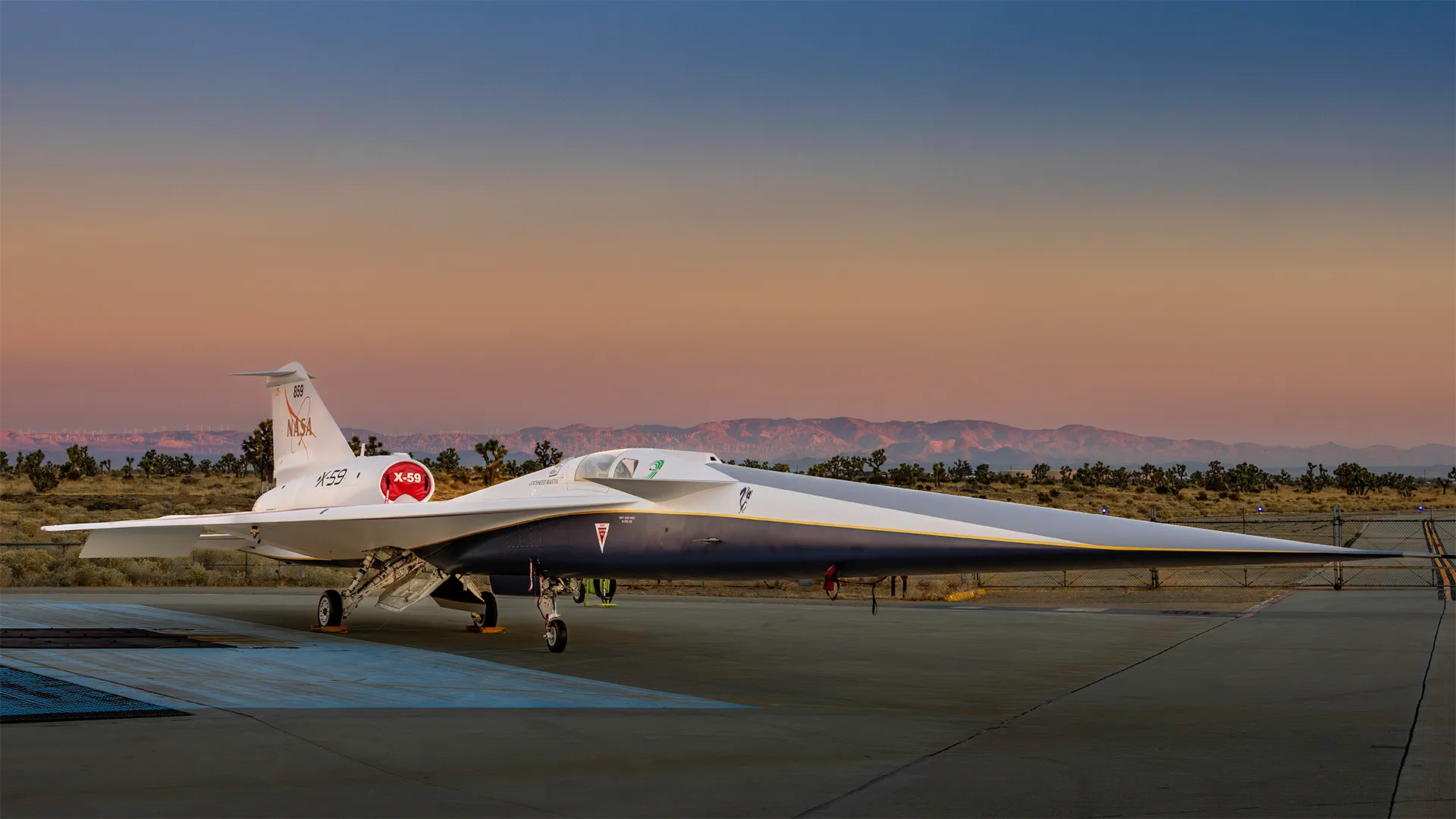
Concorde was one aircraft whose sleek, luxury, and speed have not yet found a worthy replacement. Aviation lovers are nostalgic about the times it just glided through the skies at twice the speed of sound. Much like many beauties, it had its rival- the Tupolev Tu-144, which debuted two months before the Concorde and was the first commercial aircraft to cross the hitherto unfathomable speed of Mach 2.
The decision of the USSR to cease production of the Tupolev Tu 144 and the retirement of Concorde (in 2003) amidst soaring costs of such an extravaganza coupled with the growing environmental concerns of supersonic flight was a coup de grace for commercial supersonic travel. Artists and artisans of, and in, the aviation community have always aspired for something like the beauty of these aircraft (not to forget the sheer speed) to take to the skies again.
Amidst such longings, we might stumble into a glorious resurgence of supersonic flight. It is not simply the ambitious startups, that want to couple the latest scientific technology with an eye for elegance to propel the designs of what is perceived to be a stagnant design of aircraft, forward; even aerospace giants who’ve excelled in the aviation race want the pulse of supersonic travel.
In this article, we explore the journey from Concorde to the next generation of supersonic jets.

The Concorde Legacy
The Concorde was what British Airways and Air France jointly ventured into. This collaboration ensured that an aircraft could cruise at a speed of Mach 2.04. To put this into a better light, passengers could simply whizz across the Atlantic in just three hours- one could say, it was more than a revolution in the field of long-haul travel. Compare these paltry 3 hours in a Concorde to the first flight across the Atlantic by Alcock and Brown that took 16 hours. At their time, the Daily Mail had come up with a prize of a staggering £10,000 for crossing the Atlantic in “less than 72 hours”.
Concorde, however, ran into a few problems of its own. Environmental Research started to show that if 500 aircraft like the Concorde were to take to the skies, it could drop the global levels of the ozone layer by 2%. Such a dip would increase the occurrences of non-melanoma skin cancers by as much as 4%. Concorde was notorious for its noise. On the upside, the modern acoustic fencing techniques to shield places from such heavy noise came from what we learned from Concorde itself.
The word “Concorde” in French meant equanimity, a harmony of sorts. But this peaceful connotation wasn’t able to shrug off the labels that the aircraft was a privilege of only the rich. It eventually had to be retired as it was mired with environmental concerns alongside the exorbitant costs of its operation.

The First Commercial Supersonic Aircraft was months before Concorde
The Soviet Union had quite a handful of achievements in space science as it was the first country to send a person to space, the first country to send a woman to space, and also the first country to take an aircraft traveling greater than the speed of sound to the skies. It was the same aircraft that went on to achieve the distinction of the first aircraft with a Mach Speed 2. This was an engineering Marvel of the USSR- Tupolev Tu-144
But there were only around 100 or so scheduled flights of the Tupolev- Tu 144. Although its crash in the 1973 Paris Show might have already given way to the fact that the aviation community needed to have serious reservations about the commercial success of this Soviet engineering marvel, The crash killed 6 of the crew, took the lives of 8 French civilians on the ground and left 60 bystanders injured. This Dinosaurian aircraft shrieked its way around the skies rendering passengers incapable of conversations, had crammed-up seats that passengers weren’t enamored with, and given that it was 20 tonnes heavier than Concorde, quite sluggish.
Boom Supersonic
Headquartered in Colorado, Boom Supersonic and its project, the Overture is another of the delectable prospects in the field of supersonic air travel. With a carrying capacity of 88 passengers, and that too while touching speeds of Mach 2.2, Boom Overture is proposed to connect alpha cities like New York and London. And in doubly quick time too: 3 and a half hours.
Boom Supersonic Aircraft
X-59
The experimentation with the X-59 is helping to push the boundaries of whatever speed limits are there in air travel. X-59 came to fruition due to the collaboration between Lockheed Martin and NASA. One of the great fixations of X-59 is on mitigating the sonic boom- something that is a major impediment to supersonic flight, especially over land. The sonic boom was the reason why Concorde had to keep its speeds under Mach 1 as it glided over land as opposed to when it was over water, it had permission to go past this limit.
X-59’s innovative design just might allow a milder “sonic thump,”. This is a potential way out for supersonic aircraft to fly supersonically over lands inhabited by humans/ animals.
Aerion AS2
Aerion, an aircraft manufacturer based in Nevada, in conjunction with Boeing and GE Aviation, is the driving force behind this supersonic business jet named AS2. The AS2 along with its goals of reaching speeds of Mach 1.4 also is designed with state-of-the-art aerodynamics to tone down on the impacts of the sonic boom. AS2, with its use of synthetic fuels to reduce the carbon footprint and its overall ecological footprint also just might have the distinction of being the world’s first supersonic carbon-neutral aircraft.

Supersonic Aerion AS2 Aircraft
Overcoming Challenges
Economics and Environmental Concerns
There is a sizable community working in the field of the environment that claims that the supersonic aviation programs between Lockheed Martin and NASA are a “climate debacle”. Supersonic aircraft guzzle up 7-9 times more fuel than regular aircraft, giving us a sense of a profligate exhaust as a result.

Reports claim that the introduction of 500 supersonic aircraft would have a radiative Co2 forcing of 10-17% while some manufacturers claim that as many as 40,000 supersonic aircraft might be introduced internationally. How will the aviation industry keep pace with its promises of net zero emissions by 2050 if so many supersonic aircraft are introduced, is something to be seen.
Regulatory Landscape
Working our way around the Sonic Boom is a great challenge that needs to be overcome before supersonic flights become a norm. During the Concorde era, the overpowering effect of the sonic booms of the faster-than-sound aircraft restricted their operations over land. Birds might have to bear a heavy brunt of the environmental threats, and there might be debilitating effects on land animals as well. Global Aviation authorities such as the Federal Aviation Administration (FAA) amongst others are working with supersonic aircraft manufacturers to maintain a parity between the increasing demands of extremely high-speed travel and our commitments to minimize environmental impacts.
The Future
One might as well think that the word “Boom” suffixed with “Sonic” might not be apt as it might as well be called a Sonic Whisper. One could argue that commercial supersonic travel could be a reality again and we might not have too long too much to realize our longings for Concordian air-travel have been quashed.

Boom’s Overture and Aerion’s AS2 are some beacons that the aviation industry is keeping a close eye on, for these might help foster a new era of faster-than-sound-air travel. With the possibility of biofuel dominating the aviation market, it will be interesting to see if the problems of environmentally damaging exhausts will still plague the aviation industry if it chooses to be dominated by aircraft that cross Mach 1. We’ll also have to see if their acoustic footprint will be subdued.
Conclusion
Although aviation, as a community, hopes for a resurgence of supersonic travel with minimized ecological footprints, overcoming the technical challenges, and working our way around legislations that need to be installed, might be fun. But we won’t have a full-scale bearing on these issues unless we get a scale of its ramifications. Nonetheless, we hope we are quietly inching towards an era where commuting across the Atlantic becomes a norm.
